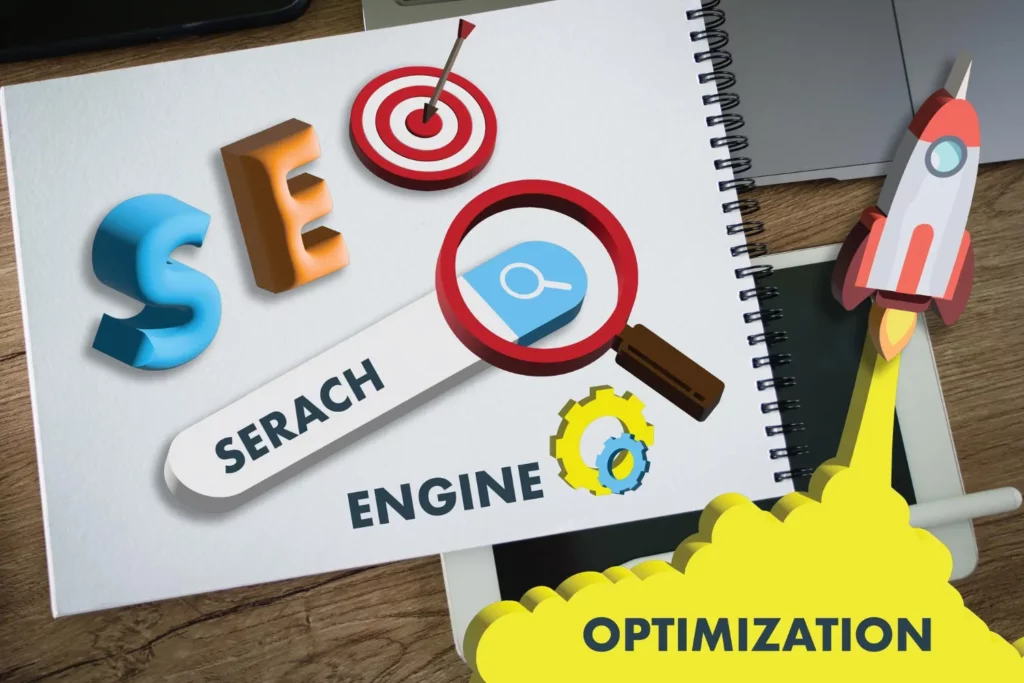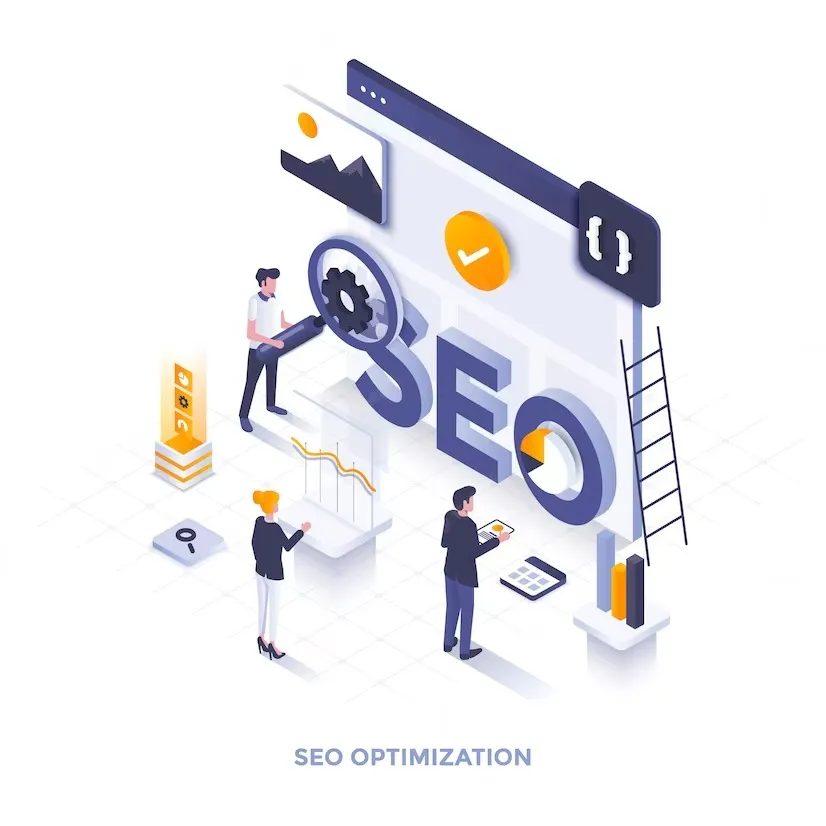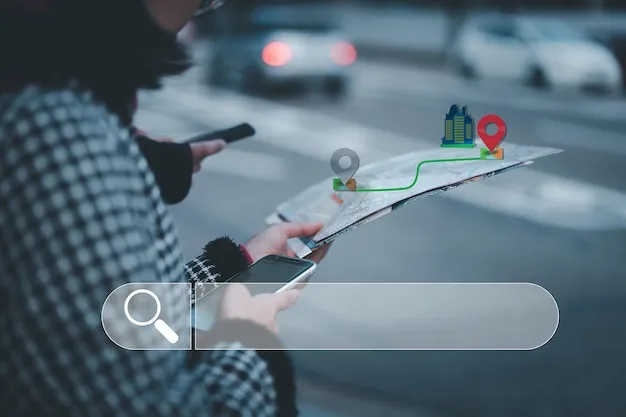Are you interested in learning how to optimize content for Augmented Reality (AR) and Virtual Reality (VR)? Do you want to stay ahead of the curve and be the first to gain insight into the world of SEO for AR and VR? If so, you’re in the right place! In this blog post, we’ll explore how these emerging technologies will impact search engine optimization and provide tips on how to create content that’s optimized for AR and VR experiences. Ready to dive in? Let’s get started!

What is Augmented Reality and Virtual Reality?
Augmented Reality (AR) and Virtual Reality (VR) are two revolutionary technologies that are changing the way we interact with digital content. AR refers to the overlay of digital information onto the real world, enhancing our perception and providing a seamless integration of virtual elements into our physical environment. VR, on the other hand, immerses us completely in a simulated digital environment, creating a sense of presence and transporting us to different virtual worlds.
These technologies have gained immense popularity in recent years, with applications ranging from entertainment and gaming to education and training. AR and VR have the power to revolutionize industries by enhancing customer experiences, increasing engagement, and creating new possibilities for innovation.
Navigating the Evolving Landscape of Search Engines and Immersive Technologies
In the context of SEO, understanding AR and VR is essential to optimize content and ensure visibility in search engines. As more people embrace these technologies, the demand for AR and VR experiences will continue to grow, and search engines will adapt their algorithms to provide relevant results. By optimizing content for AR and VR, businesses can stay ahead of the curve and position themselves for success in the digital landscape.
In the next sections, we will explore the impact of AR and VR on search, best practices for optimizing content, the use of structured data to enhance search visibility, incorporating keywords into AR and VR experiences, ensuring technical SEO optimization, creating high-quality content, and measuring the success of your AR and VR SEO strategy. Let’s dive in and unlock the potential of AR and VR for your business!

The Impact of AR and VR on Search
As technology continues to evolve, so does the way we search for and consume information. Augmented Reality (AR) and Virtual Reality (VR) are no exception. These emerging technologies have the potential to revolutionize the way we search and interact with digital content.
AR and VR have already started to impact search engines and their algorithms. As more people embrace these technologies, search engines are adapting to provide more relevant results. AR and VR experiences are becoming increasingly popular, and businesses that optimize their content for these technologies have a significant advantage in the digital landscape.
One of the key impacts of AR and VR on search is the shift from traditional text-based search to more visual and immersive experiences. AR and VR can provide users with a more engaging and interactive way to search for information. Instead of simply typing in keywords, users can now use AR and VR to explore and interact with digital content in a more meaningful way.
The Impact of AR and VR on Business Visibility and Consumer Engagement
AR and VR also have the potential to change the way businesses appear in search engine results. For example, imagine searching for a new pair of shoes. With AR and VR, you could potentially try on virtual shoes, see how they look on your feet, and even walk around in them before making a purchase. This kind of immersive experience can greatly impact how users interact with search results and ultimately influence their buying decisions.
Furthermore, AR and VR can enhance the localization and personalization of search results. With AR, users can overlay digital information onto the real world, providing them with customized and location-based search results. For example, if you’re looking for a restaurant nearby, AR can show you virtual reviews and recommendations based on your location.
In summary, AR and VR are transforming the way we search for and consume information. These technologies are not only changing how businesses appear in search results but also how users interact with and make decisions based on those results. By optimizing content for AR and VR, businesses can stay ahead of the curve and position themselves for success in this new digital era. So, let’s explore some best practices for optimizing AR and VR content for search engines.

Best Practices for Optimizing AR and VR Content for Search
Now that we understand the impact of Augmented Reality (AR) and Virtual Reality (VR) on search, it’s time to explore the best practices for optimizing content in these immersive experiences. Here are some key strategies to keep in mind:
Focus on User Experience
AR and VR are all about creating an engaging and immersive experience for users. When optimizing your content, prioritize the user experience by making it interactive, visually appealing, and intuitive to navigate. Consider how users will interact with your content in the AR or VR environment and design it accordingly.
Optimize for Mobile
With the rise of smartphones and portable AR/VR devices, it’s crucial to ensure your content is mobile-friendly. Make sure your website and AR/VR experiences are responsive and optimized for different screen sizes. This will not only enhance the user experience but also improve your search engine rankings, as Google prioritizes mobile-friendly websites.
Use Relevant Keywords
Just like traditional SEO, using relevant keywords is important in optimizing content for AR and VR. Research and identify the keywords that your target audience is likely to use when searching for content related to your AR/VR experiences. Incorporate these keywords naturally into your content, including titles, descriptions, and alt tags for images or videos.
Leverage Social Media and Influencers
AR and VR experiences are highly shareable and have the potential to go viral on social media. Capitalize on this by promoting your AR/VR content through social media platforms and collaborating with influencers who have a strong following in the AR/VR space. This can help increase visibility and drive traffic to your content.
Analyze and Optimize
Regularly analyze the performance of your AR/VR content and make necessary optimizations. Pay attention to metrics such as user engagement, time spent, and bounce rates to identify areas for improvement. Continuously update and optimize your content based on user feedback and analytics data to ensure its effectiveness in search results.
By following these best practices, you can ensure that your AR and VR content is optimized for search engines, providing a seamless and immersive experience for users. Remember, the key is to prioritize user experience while leveraging SEO techniques to increase visibility and reach. So, let’s dive in and start optimizing your AR and VR content for search!

Using Structured Data to Enhance AR and VR Search Visibility
Using structured data is a powerful way to enhance the search visibility of your Augmented Reality (AR) and Virtual Reality (VR) content. By implementing structured data markup, search engines can better understand the context and purpose of your AR and VR experiences, leading to improved rankings and visibility in search results.
Structured data provides search engines with additional information about your content, such as product details, reviews, and event information. For AR and VR content, structured data can be used to provide search engines with key information about the virtual objects, locations, or experiences featured in your content. This can include details such as dimensions, colors, materials, and more.
The Power of Structured Data for Enhanced Visibility and User Experience
By providing search engines with this structured data, you increase the chances of your AR and VR content being displayed in relevant search results. This not only helps drive traffic to your content but also improves the overall user experience by ensuring that users find the most relevant and accurate information about your AR and VR experiences.
To use structured data effectively, you can utilize various schema markup formats, such as Schema.org. This markup allows you to provide detailed information about your AR and VR content, making it easier for search engines to understand and display your content appropriately.
Incorporating Keywords into AR and VR Experiences
Incorporating keywords into your Augmented Reality (AR) and Virtual Reality (VR) experiences is crucial for optimizing your content and improving its visibility in search results. When it comes to AR and VR, keywords play a vital role in helping search engines understand the context and relevance of your content.
To effectively incorporate keywords into your AR and VR experiences, start by conducting keyword research to identify the terms and phrases that your target audience is likely to use when searching for content similar to yours. Once you have a list of relevant keywords, strategically place them throughout your content, including in titles, descriptions, captions, and alt tags for images or videos.

Balancing SEO Optimization with User Engagement for Stellar Results
When incorporating keywords into your AR and VR experiences, it’s important to do so naturally and seamlessly. Avoid keyword stuffing, as this can negatively impact the user experience and even lead to penalties from search engines. Instead, focus on creating high-quality, engaging content that incorporates keywords in a way that enhances the overall experience for users.
By incorporating keywords into your AR and VR experiences, you can increase the visibility of your content in search results and attract more users to engage with your brand. So, take the time to research and optimize your keywords to ensure that your AR and VR experiences are easily discoverable by search engines. Let’s optimize your content and unlock its full potential!
Ensuring Technical SEO Optimization for AR and VR
Now that we’ve covered the impact of Augmented Reality (AR) and Virtual Reality (VR) on search and explored best practices for optimizing content, it’s time to dive into the technical aspects of SEO for AR and VR.
When it comes to optimizing your AR and VR content, there are a few technical SEO considerations to keep in mind. Firstly, ensure that your website is mobile-friendly and responsive. With the rise of smartphones and portable AR/VR devices, it’s crucial that your content can be accessed and experienced seamlessly across different devices and screen sizes.
Additionally, pay attention to the loading speed of your AR and VR experiences. Slow-loading content can lead to a poor user experience and negatively impact your search engine rankings. Optimize your content by minimizing file sizes, compressing images and videos, and leveraging caching techniques.
Sitemaps and SEO: Maximizing AR and VR Content Visibility for Organic Traffic Growth
Another important technical SEO aspect is the use of sitemaps. Ensure that your AR and VR content is included in your XML sitemap, making it easier for search engines to discover and index your content. This will improve your visibility in search results and help drive organic traffic to your AR and VR experiences.
Lastly, consider implementing schema markup for your AR and VR content. Schema markup provides search engines with additional information about your content, making it easier for them to understand and display your AR and VR experiences in search results.
By addressing these technical SEO considerations, you can ensure that your AR and VR content is optimized for search engines, providing a seamless and immersive experience for users. Remember, technical SEO is just one piece of the puzzle – prioritize user experience and quality content to truly unlock the potential of AR and VR for your business.

Tips for Creating High-Quality AR and VR Content
Creating high-quality Augmented Reality (AR) and Virtual Reality (VR) content is essential for engaging users and ensuring a successful SEO strategy.
Here are some tips to help you create compelling AR and VR experiences:
Understand your audience
Before diving into content creation, thoroughly research and understand your target audience. Identify their needs, preferences, and expectations when it comes to AR and VR content. This will help you tailor your experiences to meet their specific requirements.
Tell a story
Use storytelling techniques to captivate your audience and create immersive AR and VR experiences. Develop narratives that guide users through the content and make them feel a part of the story. Engage their emotions and provide them with a memorable experience.
Focus on interactivity
AR and VR are all about interaction. Incorporate interactive elements into your content to engage users and keep them actively involved. Allow them to explore and manipulate virtual objects, provide options for customization, and encourage them to take actions within the experience.
Pay attention to visuals
Visuals play a crucial role in AR and VR experiences. Invest in high-quality graphics, animations, and 3D models to create realistic and visually stunning content. Ensure that the visuals are optimized for performance to prevent any lag or glitches that may disrupt the user experience.
Prioritize user feedback
Actively seek feedback from users who engage with your AR and VR content. Pay attention to their suggestions and comments, and use that information to improve and refine your content. User feedback can provide valuable insights into what works and what can be enhanced in your experiences.
Test and iterate
Don’t be afraid to experiment and iterate on your AR and VR content. Test different concepts, layouts, and interactions to find what resonates best with your audience. Continuously refine and improve your content based on user feedback and analytics data to ensure its effectiveness.
By following these tips, you can create high-quality AR and VR content that engages users and drives organic traffic. Remember, the key is to prioritize user experience and deliver immersive and memorable experiences that set you apart in the AR and VR landscape.









